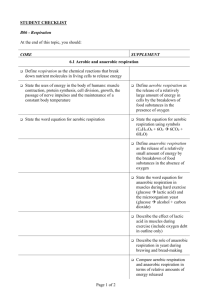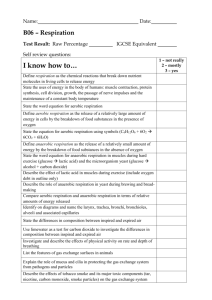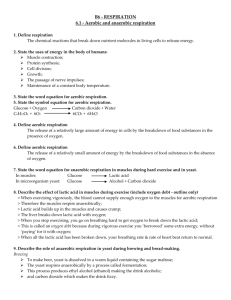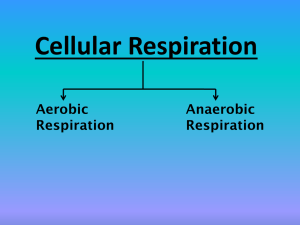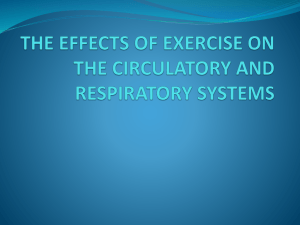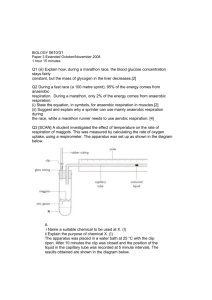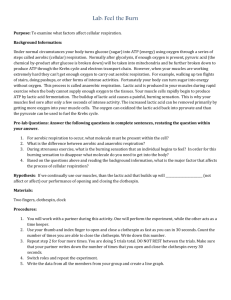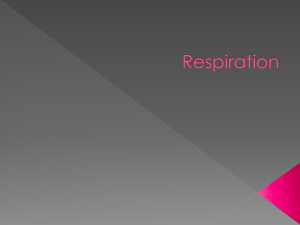B6.1 Revision notes
advertisement
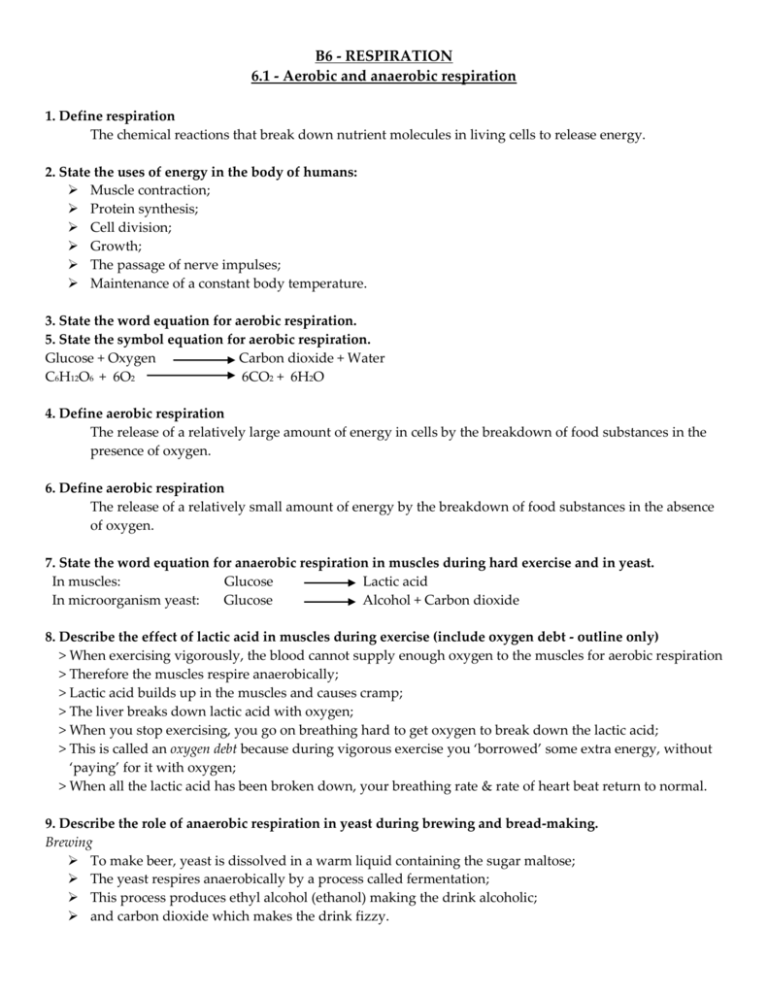
B6 - RESPIRATION 6.1 - Aerobic and anaerobic respiration 1. Define respiration The chemical reactions that break down nutrient molecules in living cells to release energy. 2. State the uses of energy in the body of humans: Muscle contraction; Protein synthesis; Cell division; Growth; The passage of nerve impulses; Maintenance of a constant body temperature. 3. State the word equation for aerobic respiration. 5. State the symbol equation for aerobic respiration. Glucose + Oxygen Carbon dioxide + Water C6H12O6 + 6O2 6CO2 + 6H2O 4. Define aerobic respiration The release of a relatively large amount of energy in cells by the breakdown of food substances in the presence of oxygen. 6. Define aerobic respiration The release of a relatively small amount of energy by the breakdown of food substances in the absence of oxygen. 7. State the word equation for anaerobic respiration in muscles during hard exercise and in yeast. In muscles: Glucose Lactic acid In microorganism yeast: Glucose Alcohol + Carbon dioxide 8. Describe the effect of lactic acid in muscles during exercise (include oxygen debt - outline only) > When exercising vigorously, the blood cannot supply enough oxygen to the muscles for aerobic respiration > Therefore the muscles respire anaerobically; > Lactic acid builds up in the muscles and causes cramp; > The liver breaks down lactic acid with oxygen; > When you stop exercising, you go on breathing hard to get oxygen to break down the lactic acid; > This is called an oxygen debt because during vigorous exercise you ‘borrowed’ some extra energy, without ‘paying’ for it with oxygen; > When all the lactic acid has been broken down, your breathing rate & rate of heart beat return to normal. 9. Describe the role of anaerobic respiration in yeast during brewing and bread-making. Brewing To make beer, yeast is dissolved in a warm liquid containing the sugar maltose; The yeast respires anaerobically by a process called fermentation; This process produces ethyl alcohol (ethanol) making the drink alcoholic; and carbon dioxide which makes the drink fizzy. Bread making Yeast is mixed with water and sugar to activate it; The mixture is added to flour to make dough, and left in a warm place; The dough rises as the yeast respires and releases carbon dioxide, which gets trapped in the dough; When the dough is cooked, the high temperature kills the yeast and evaporates any alcohol formed; Air spaces are left where the carbon dioxide was trapped, which gives the bread a light texture. 10. Compare aerobic respiration and anaerobic respiration in terms of relative amounts of energy released. Aerobic respiration Uses oxygen No alcohol or lactic acid made Large amount of energy released from each molecule of glucose Carbon dioxide made Anaerobic respiration Does not use oxygen Alcohol (in yeast and plants) or lactic acid (in animals) is made Much less energy released from each molecule of glucose Carbon dioxide is made by yeast and plants, but not by animals
